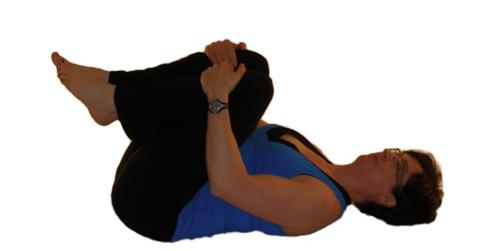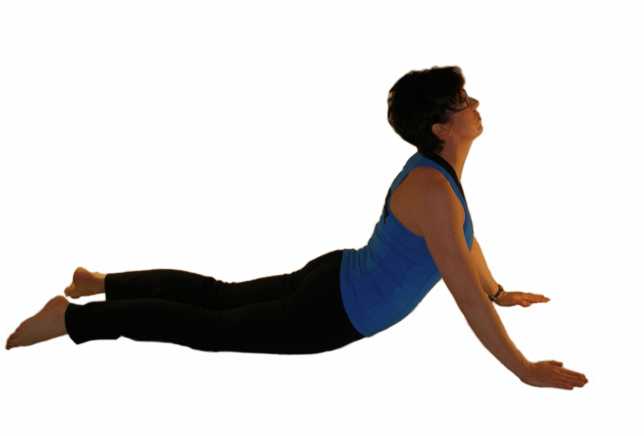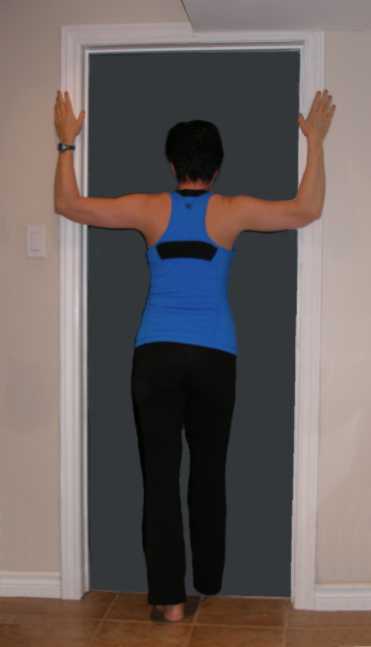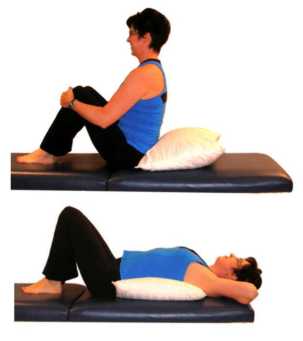Back Stretches
Back stretches when done on a regular basis will maintain the flexibility of your spinal ligaments, muscles, and fascia. Maintaining back mobility by doing a few back stretching exercises on a regular basis is important in terms of preventing back pain. If you are looking to relieve back pain or dysfunction or even back pain that has come on "for no particular reason" that may or may not have resulted from a back injury, it is best to consult a physical therapist rather than try all the back stretches out there. Your particular problem may require specific stretches in a particular direction. Working or stretching in the wrong direction could make your problem worse. Your physical therapist can diagnose mechanical problems and prescribe the correct back exercises for you.
Back Stretches Contents
Why
do we do back
stretches
What
happens if we never stretch our back
Can
stretching our back correct back pain?
Can
stretching your back prevent back pain?
How
do
I know what stretches to do for my back?
Back
Stretching Exercises.
Anatomy
of the back
Why do we do back stretches?
The purpose of doing back stretches is multifacetted. Back stretches
are necessary to maintain mobility, maintain joint health, sustain a
good posture, and normalize forces on discs.
Maintain
Mobility
Like all joints if you fail to take the joints in your back through
their full range of motion on a regular basis you will eventually lose
that range of motion. Like the saying "if you don't use it, you lose
it." You can observe this in someone that has to spend weeks in a cast
due to a fracture. While the fracture heals usually without issue, the
joints that have been immobilized have become stiff because soft
tissues have shortened, muscles have become weak, and cartilage has
become softer. If we maintain our
joints in a range that allows the surrounding soft tissues to shorten
then eventually they will
shorten and lead to stiffening.
Maintain
Joint Health
The cartilage in the joints of your spine do not have a blood supply.
They instead derive nutrients like a sponge through diffusion. It is
the movement and compression of the cartilaginous surfaces that
maintains their optimum health. back stretches will take your joints through their full range of movement.

Sustain
a Good Posture
If you cannot move your joints into a position of good posture you
simply cannot maintain a good posture. When
we are children we have
good movement between each segment of the spine, so when we twist our
back or turn our head we do so by moving many joints. As we get older
and some joints lose mobility, others have to compensate by becoming
hypermobile or too mobile. This can lead to premature joint
degeneration. If we can maintain mobility in all segments by doing back stretches we can
minimize stress on those that would need to compensate for that loss.
Normalize
Forces on Discs
I like to compare discs to jelly donuts in order to explain the
hydrostatics to my patients. When you compress one side of a jelly
donut, the jelly gets pushed to the other side. As it pushes it strains
the annular fibres that hold it in. Over time and with age and previous
injuries these annular fibres break down, develop cracks and fissures
and can allow the jelly material to bulge. By doing back stretches in certain
directions we can alter the position of the jelly material and minimize
the
stress on those annular fibres.
What happens if we never stretch our back?
Gravity is an ever present and dangerous force we live with on a daily basis. Unless we fight it, gravity will always win. That normal "S" shaped curve we all should have becomes shorter and more compressed if we let it. It is usually at the peaks of those curves in the "S" that we develop pain, strain, arthritis, compression fractures, etc. If we slouch and let gravity take hold we are essentially hanging on our ligaments and joints as opposed to keeping our joints in a nice neutral position. This will lead to regions of hypo mobility (stiffness) and hypermobility(too much movement) and subsequent degenerative changes.
Can back stretches correct back pain?
This of course depends on what is causing your back pain. Sources of
back pain can be
- Inflammation
- Ligament strain
- Muscular fatigue
- Bulging or herniated discs
- Infections
- Tumours
- Vascular disease
Obviously not all of these problems will respond to simply stretching
the back. Consult your family physician or physical therapist if the
source of your back pain has never been diagnosed. It is important to
rule out serious problems rather than dismissing them in hopes of self
treating.
Pain originating from ligament strains, muscular fatigue, and bulging
discs will respond to the correct forms of stretching. That type,
frequency and direction of stretching should be prescribed by a
physical therapist. The wrong type of stretching in these cases could
potentially make your pain and your condition worse.
Can stretching your back prevent back pain?
Stretching your back will prevent mechanical back pain that results
from shortening soft tissues. We call this a dysfunction. A dysfunction
results when a spinal segment or segments lose their range of motion.
This is usually a progressive condition that develops slowly over the
course of years through
the maintenance of poor postures. (not to be confused with
Scheuermann's disease, or spondyloarthropathies).
By stretching your back on a regular basis you stretch the ligaments as
well as the muscles and prevent the shortening that leads to
dysfunction. Also,by avoiding slouched or forward head
postures
we don't allow excessive stretching forces to deform the supporting
connective tissues leading to hypermobility which can lead to disc
degeneration and arthritis.
How do I know what stretches to do for my back?
Which back stretches you need to do for your back will depend on many
factors:
- What postures you assume during most of the day.
- Your occupation.
- Your age.
- Muscle imbalances you may have
- Underlying conditions.
- Mobility of adjacent joints.
As it is impossible to present every scenario, I advise that you consult your physical therapist if you have any concerns or underlying conditions.
Back Stretches
Here are some back stretching exercises suitable for a generally healthy population to maintain mobility. If you have pain or an underlying or preexisting condition consult your physical therapist to see if these back stretches are appropriate for you.
Flexion
in Lying
- Lie on your back on a bed or on the floor with your head on a pillow.
- Bend your knees up so that your feet are flat on your floor.
- Grab hold of both your knees and slowly pull them up toward your chest. If you have discomfort in your knees doing this you may grab the back of your thighs. If your abdomen gets in the way then spread your legs apart and pull up. Keep your neck and shoulders relaxed during this stretch and breath normally.
- Slowly straighten your arms while continuing to hold onto your knees.
- Repeat the above ten times.
You should pull only to the point of tension. You should not pull into
any pain, bounce, or force the movement. If you are stiff in this
direction it may take you months of repeating this exercise
to
regain full range of motion. This exercise is best not done in
isolation. Most people should follow this exercise by Repeated
Extension in Lying.

Repeated
Extension in
Lying
- Lie on the floor or your bed face down.
- Put your hands at your sides at shoulder level like you are going to do a push up.
- Whilst keeping your back relaxed and hips on the floor, push your shoulders up and straighten your arms.
- Exhale when you reach the top and let your mid back sag as you exhale.
- Slowly lower yourself to the starting position.
- Do not hold this position, but simply repeat the up and down motion 10 times.
You should push only to the point of tension while maintaining your
hips on the floor. You should not push into
any pain, bounce, or force the movement. You should have a gentle curve
in your back as you push up, no severe curvatures in one location. If
you are stiff in this
direction it may take you months of repeating this exercise
to regain full range of motion. Stretching the ligaments of the spine
safely is like moving teeth. It takes a small force on a repetitive
basis over a long period of time. If you hold this stretch it can lead
to excessive forces exerted on just a few joints as opposed to having
the forces distributed along the whole back. Be gentle. It's likely
that your back has become stiff over years, and that's not going to be
fixed in a few weeks. It can take months.

Supported
Upper Thoracic
Extension
- Sit up on a chair with a back whose height ends in the mid thoracic region - just at the bottom or just below your shoulder blades.
- Slide your butt right to the back of your chair.
- Clasp your hands behind your head with your elbows back.
- Slowly lean back over the back of the chair so that you are looking at the ceiling.
- Exhale and relax into this stretch.
- Return to the upright position.
- Repeat this exercise 10 times, don't hold it.

You should push only to the point of tension. You should not push into any pain, bounce, or force the movement. If you are stiff in this direction it may take you months of repeating this exercise to regain full range of motion. This exercise stretches the ligaments on the front in your spine as well as taking pressure off the discs and vertebral bodies. It is good to do this stretch if you are in an occupation that involves periods of prolonged sitting

Doorway
Stretch
- Stand facing a doorway.
- Put your hands on the door frame such that your shoulders are at 90 degrees (elbows at shoulder level)
- Relax and take a small step into the door while keeping your arms and shoulders relaxed.
- Exhale and hold this stretch for about 30 seconds.
Your step should be small enoughso that you feel a pulling in your chest, but no pain. This is a particularly good stretch if you sit at a desk all day. In that position the pectoral muscles get tight and pull your head forward. Head forward postures can be the cause of headaches, disc injuries, and dysfunctions. If you have any history of shoulder injuries or instabilities, consult your physical therapist prior to trying this exercise.
Back over
a Pillow
- Sit on the floor with your knees bent.
- Position a pillow across at about the level of the bottom of your shoulder blades will sit when you are lying on the floor.
- Lie back slowly onto the pillow while keeping your knees bent up as far as they will go.
- Clasp your hands and with your arms straight raise them up and over your head.
- Keep your chin tucked in, don't allow your chin to stick out.
- Exhale and relax your chest and ribs.
- Hold this for about 30 seconds.

This back stretch helps to reverse the kyphosis in the thoracic spine. While
it is normal to have a kyposis, gravity is always working to exaggerate
it. Excessive kyphosis puts pressure on discs and vertebral bodies, and
in severe cases can interfere with breathing.
Pelvic
Tilt
- Lie on your back on the floor with a pillow under your head.
- Bend your knees so that your feet are flat on the floor.
- As you lay there you will notice there is likely a space between your lower back and the floor. Tighten your abdominal muscles by pulling your naval in and lifting your tail bone up.
- Your pelvis should still be on the floor but you should be able to feel your lower back against the floor.
- Hold this position for 10 seconds, and repeat 10 times.

If you do not feel your lower back pressing against the floor
you may be tight in that region. Place your hand under your lower back.
Doing the pelvic tilt you should feel your lower back pushing down on
your hand. Do not hold your breath.
The pelvic tilt is a dynamic way of stretching the lumbar extensors.
The easiest way of performing the pelvic tilt is lying down.
As this
is mastered you should try it standing with your back against the wall
or when on all fours.
Kneeling Lumbar Flexion
- Kneel down and sit on your heels.
- Keep knees about hip width apart.
- Place your hands on your thighs.
- Slide your hands down your thighs onto the floor in front of you supporting your weight as your trunk moves down toward the floor. If you are able to you may rest your forehead on the floor.
- Breathe deeply allowing your back to relax and Hold this position. for 30 to 60 seconds.

This is a gentle stretch for the lumbar extensors. Also being stretched are latissimus dorsi, teres major, lower trapezius, gluteals, lumbodorsal fascia, part of the quadriceps, and ankle dorsiflexors.
Anatomy of the Back
Bones
The spine is the supporting structure that makes up the axial skeleton. There are 33 vertebrae in most people: Seven cervical vertebra, 12 thoracic vertebrae, five lumbar vertebrae, a sacrum consisting of five fused vertebrae, and the coccyx that consists of four fused vertebrae.

These vertebrae are arranged in such a way as to impart curves to the
spine. The shape of the normal spine is curved out in the thoracic or
middle
back region and curved in in the lumbar or lower back region. These
curves allow the spine to remain flexible. It is when these curves
become excessive or reversed that problems can arise.
Between the
vertebrae are the discs that act as shock absorbers and allow the
vertebrae to rock back and forth on one another. Holding these discs
and vertebrae in a column are the ligaments. Ligaments are the
connective tissues that connect bone to bone and like other soft
tissues are prone to shortening or lengthening depending on forces
exerted upon them. Ligaments kept in a shortened position for prolonged
periods of time will shrink and ligaments held in a stretched position
for prolonged periods will undergo creep and become lengthened.
Ligaments
Ligaments are the connective tissues that attach bone to bone and hold this column of vertebrae and discs together. The anterior longitudinal ligament traverses the front of the vertebrae, the posterior longitudinal ligament traverses down the back of the vertebral bodies, and the ligamentum flavum is a relatively elastic ligament that runs along behind the spinal canal.

There is also a ligament that runs from spinous process to spinous process - the supraspinous ligament, and ligaments between the spinous processes - the intraspinous ligaments. There are also strong ligaments that attach L5 to the ilium.
Intervertebral Disc
The intervertebral discs lie between the vertebral bodies and act as shock absorbers, allowing the vertebrae to pivot on one another. The outer layers of the disc are like an onion, layer upon layer. The outer layers consist of strong fibrous connective tissues that hold the gelatinous of the nucleus pulposus in. The nucleus pulposus is a gelatinous substance that dries out as we age. Studies have shown that, like a jelly donut, this substance shifts depending on forces exerted upon it.

Knowing this we
can do back stretches that influence the position of the nucleus pulposus.
When I discuss discs with patients I like to compare them to a jelly
donut. In very simplistic terms the hydrostatics are similar.
Muscles
Deep
Muscles of the Back
Erector
Spinae
- Spinalis
- Longissimus
- Iliocostalis
Transversospinalis
- Semispinalis
- Multifidus
- Rotatores
Splenius
Intermediate
Layer of Muscles
- Levatores Costarum
- Serratus Posterior Superior
- Serratus Posterior Inferior
Superficial
Layer of Muscles
- Trapezius
- Latissimus Dorsi
- Levator Scapula
- Rhomboid Major
- Rhomboid Minor
